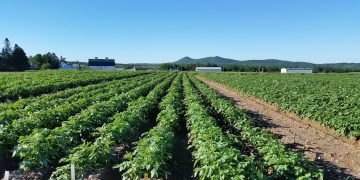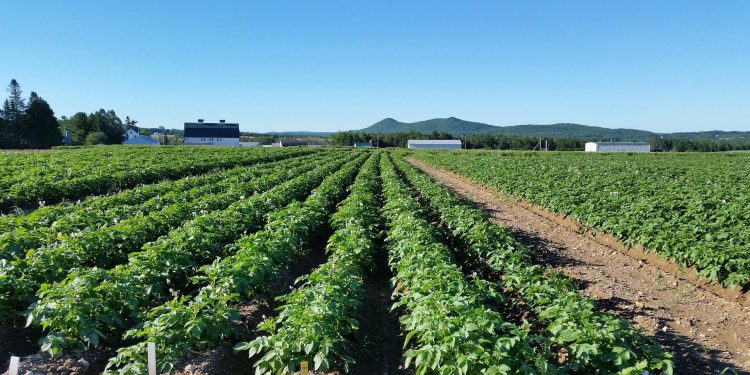#Agriculture #PotatoFarming #KufriSinduri #AgriculturalResilience #CropDiversity #SustainableFarming #Kushinagar #AgriculturalInnovation #CropYieldOptimization #AgriculturalCommunityCollaboration
In a significant turn of events for the agricultural community, the potato sowing area in Kushinagar’s renowned government potato field, Kasaya (Barwa Farm), has seen a notable reduction this year. The cultivation area has been scaled down to a mere 4.7 hectares, exclusively dedicated to the Kufri Sinduri breed, a resilient variety of potatoes known for its robust characteristics. In this article, we delve into the implications of this change, exploring the unique features of Kufri Sinduri and its potential to transform the agricultural landscape in Kushinagar.
The recent update from Kushinagar, dated October 9, 2023, has brought forth a pivotal change in the region’s agriculture. The potato sowing area has been significantly reduced, with a mere 4.7 hectares allotted for cultivating the esteemed Kufri Sinduri breed. This decision stems from various factors, including the need for optimized land usage and a focus on high-yield, resilient potato varieties.
According to the provided data, the Kufri Sinduri breed stands out due to its exceptional characteristics:
- Low Susceptibility: Kufri Sinduri exhibits minimal vulnerability, making it an ideal choice for varied weather conditions.
- Adaptability: Suited for the climatic conditions of Purvanchal, this breed thrives in the region’s unique climate.
- High Yield: With a harvest period ranging from 110 to 130 days, Kufri Sinduri boasts an impressive yield of 210 to 230 quintals per hectare.
- Reduced Damage: The breed shows resilience against common agricultural challenges, leading to reduced losses.
In light of these qualities, the decision to focus on Kufri Sinduri holds promise for Kushinagar’s agricultural future. However, it is essential to consider the broader implications of this shift.
The reduction in potato cultivation area raises questions about the region’s agricultural strategy. The mentioned area was previously utilized for a variety of crops, including potatoes, peas, cucumber, among others. This change signifies a shift towards specialized farming, emphasizing the cultivation of specific high-yield varieties like Kufri Sinduri.
Furthermore, the agricultural community faces the challenge of adapting to this change. Farmers, agronomists, agricultural engineers, and scientists must collaborate to maximize the potential of this focused approach. Proper training, access to resources, and knowledge sharing will be crucial in ensuring the success of this transition.
The decision to allocate a reduced area for potato farming in Kushinagar, specifically for Kufri Sinduri, marks a significant shift in agricultural practices. By concentrating efforts on resilient, high-yield varieties, the region aims to enhance productivity and ensure economic stability for its farmers. However, successful implementation will require careful planning, community involvement, and ongoing support from agricultural experts and policymakers.
































